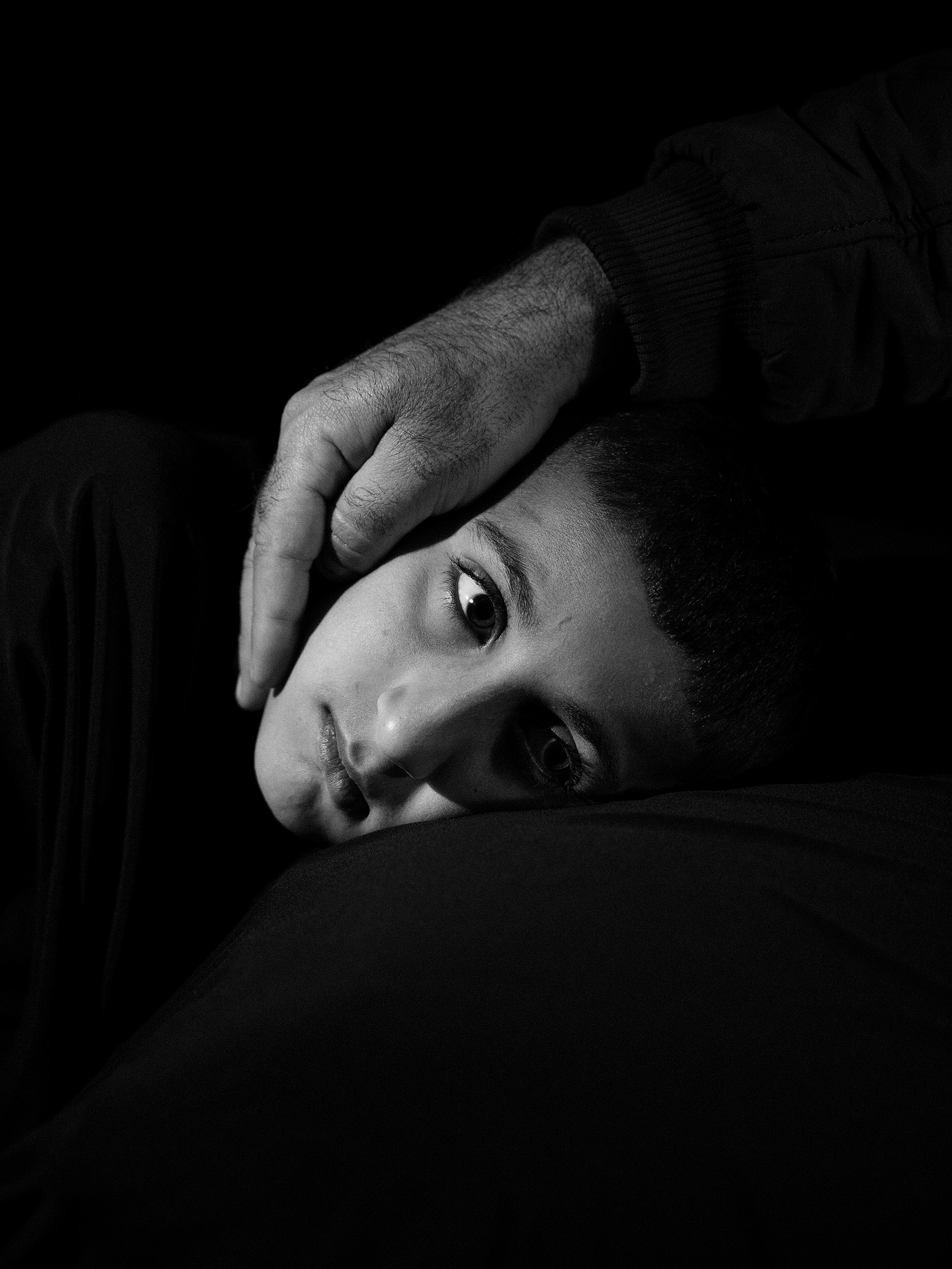A Portrait of Trauma
Listening and collaborating with a displaced child in northern Iraq
Thank you all for subscribing and following this conversation. This post is my second post of week three, your response to my letters has been overwhelmingly positive, and I am inspired to keep this going. Your feedback will continue to guide me here, so please write to me, comment under threads, and engage freely. Some of your ideas and questions will find their way into my posts and generate a deeper conversation.
I’ve been asked how I stage documentary portraits: what the process is, what guides the pose, what parts are spontaneous, and what ethics underpin my decisions. Every context is different, but there are some fundamental methods integral to my practice when making documentary portraits: listening, observing, asking the person you're engaging with to be invested in the process, then working with them collaboratively.
In 2019, The New York Times Magazine assigned me to take photographs for the story “How Does the Human Soul Survive Atrocity?” I traveled to the Kurdish region of northern Iraq to meet the survivors of ISIS captivity, many of them children from the ethnic Yazidi population, who had recently returned from years of captivity in Syria.
I was introduced to 11-year-old Rezan in a sprawling camp of over 16,000 displaced Iraqis, where white tents greyed by the dust and the sun stretched in uniformed rows. In 2014, when ISIS swept through northern Iraq and captured the predominantly Yazidi district of Sinjar, Rezan was kidnapped by the terrorist group. His father and two brothers also went missing at this time and were never seen again. Rezan’s mother and two other siblings evaded the ensuing militants and later emigrated to Canada. In the months before my visit in April 2019, American-backed Syrian forces had challenged some of the last ISIS strongholds, and Rezan, along with thousands of other Iraqi children, were freed after five years in captivity.
Rezan was under the guardianship of his uncle, who invited me into their carpeted tent to make a portrait of them. As we sat on floor cushions, Rezan’s uncle described his nephew as being reserved and not speaking much since his release. For the next 45 minutes over black sugary tea, we conversed about the plight of the Yazidis—the lost relatives and homes, the people still missing, and Rezan’s trauma.
Rezan was flighty. He left the room and came back several times during the interview. At one point, he came into the room, curled up on the cushion next to his uncle, and put his head on his lap. His uncle didn't break the conversation but lifted his hand to Rezan’s face and held it firm.
After we finished the interview I declined their offerings of more tea; it was time to make a portrait. After listening to Rezan’s story, the photograph I thought best represented his trauma and vulnerability was Rezan being embraced by his uncle. It was a pose and gesture that had come spontaneously. As Rezan’s uncle sat, I draped his lap with a black sheet, and Rezan curled into his uncle as he had earlier. As he did this his uncle looked down and put a hand on his head. There wasn't a need for further direction, they had done this before.
I only ask a subject to pose when the image will be read as a portrait. But when I do, I always come to that pose through a gesture the subject has already made, or an insight they have provided in an interview. The pose has to serve the integrity of the subject's story. This is the guiding force that defines the moment I record.


Such compassion and a beautiful moment. As a photojournalist you revealed your own passion for this boy by making such a story telling image. I can’t imagine what this boy has endured in his short life but your portrait really helps tell his story with the hope for a better life.
Again, Thank you Adam. In your portraits there is this space between you and the protagonist, a space which let the place for the connection with the soul, which reveal the intensity of it. I believe that require a certain skill, the skill maybe to be present but not intrusive, guiding but in the same time to let it go... I still struggle with being able to do that, to find this "space", it's so complicated to be guiding the process but still being able to let it be natural, there is so often a stiffness or awkwardness...how do you deal with it?